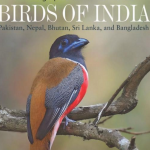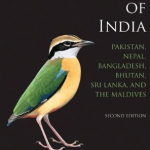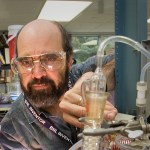India
A Photographic Field Guide to the Birds of India, Pakistan, Nepal, Bhutan, Sri Lanka, and Bangladesh is one of those next gen guides that uses photos but photos that are either enhanced or contextualized to serve the same role as drawings served in the old days, when drawings were better and photos were merely fun.
From the editors:
This is the only comprehensive photographic field guide to the birds of the entire Indian subcontinent. Every distinct species and subspecies--some 1,375 in all-
-is covered with photographs, text, and maps. The guide features more than 4,000 stunning photographs…
Populations around the world face many severe water challenges, from scarcity to contamination, from political or violent conflict to economic disruption. As populations and economies grow, peak water pressures on existing renewable water resources also tend to grow up to the point that natural scarcity begins to constrain the options of water planners and managers. At this point, the effects of natural fluctuations in water availability in the form of extreme weather events become even more potentially disruptive than normal. In particular, droughts begin to bite deeply into human well-being…
My maternal grandpa Ingemar Leander worked as a sales agent of the Swedish Match Company in Punjab in the 30s before he got married. It was the adventure of his lifetime. Here's the story of his that I remember best.
Once when he went crocodile hunting on the river the party was a little clumsy and startled their prey into the water from the sandbank the animals had been basking on. Only one crocodile stayed behind and was shot. This turned out to be because it was in poor health. When they gutted the animal they found that a bone had pierced its stomach from inside.
It was the arm bone of a…
Let's look at Birds of India: Pakistan, Nepal, Bangladesh, Bhutan, Sri Lanka, and the Maldives (Second Edition) (Princeton Field Guides):
The best field guide to the birds of the Indian subcontinent is now even better. Thoroughly revised, with 73 new plates and many others updated or repainted, the second edition of Birds of India now features all maps and text opposite the plates for quicker and easier reference. Newly identified species have been added, the text has been extensively revised, and all the maps are new. Comprehensive and definitive, this is the indispensable guide for anyone…
The World Health Organization has confirmed that India has gone a whole year without having a new case of polio -- a major milestone in a country that was once plagued by the crippling disease. BBC's Fergus Walsh explains that the country won't formally be regarded as polio-free until it's gone another two years without a case of the disease, but reaching the one-year mark is still an occasion for celebration. In an earlier piece, Walsh describes the massive polio vaccination effort that has allowed the country to achieve this success; India's government partnered with the World Health…
SciDev.Net's TV Padma reports that tuberculosis experts are looking to India to develop affordable TB-testing kits. An estimated four million cases of the disease go undetected, and two million TB patients die every year. India has increased its efforts at finding and treating cases of the disease, but diagnostics still present a challenge, Padma explains:
TB tests come in a range. Latent infections can show up as a reaction when the protein, tuberculin, is injected under the skin. Blood tests may reveal immune molecules (gamma interferon) produced by the body to protect against the bacterium…
This guest post is written by Stephen R. Springston, an atmospheric chemist at Brookhaven National Laboratory. After receiving his Ph.D. in chemistry from Indiana University, he completed a postdoctoral fellowship at the University of Utah before joining Brookhaven in 1986.
Stephen Springston
After studying clouds and climate in Oklahoma during tornado season and storms atop Colorado mountaintops, a group of atmospheric scientists from Brookhaven National Laboratory will soon be helping to sample the skies over India.
We've been asked to share our expertise on conducting ground and…
The Food Crisis, of course. In fact it really never left - since 2007 we've had more hungry people on the planet than ever before in human history, and while we've seen brief declines in the numbers of the hungry worldwide, those declines were of such short duration that they were essentially meaningless - earlier this year when the UN trumpeted that the number of the hungry had dropped back below 1 billion, it admitted that this excluded Pakistani flood victims, the impacts of the crisis in the Russian wheat crop and a host of other late-year issues.
On the lists of guests no one ever…
Mark Pendergrast writes: To kick off this book club discussion of Inside the Outbreaks, I thought I would explain briefly how I came to write the book and then suggest some possible topics for discussion.
The origin of the book goes back to an email I got in 2004 from my old high school and college friend, Andy Vernon, who wrote that I should consider writing the history of the EIS. I emailed back to say that I was honored, but what was the EIS? I had never heard of it. I knew Andy worked on tuberculosis at the CDC, but I didn't know that he had been a state-based EIS officer from 1978…
For a short 5 minute tour of Bill Gates tackling the controversy of GE crops, please see the blog ERV. Thanks for the plug ERV
If you have 45 minutes, watch the entire video here. Bill is serious, sincere and a good speaker with important concepts to convey:
The video starts about 11 minutes in.
Coca-Cola sucks India dry. Image: Carlos Latuff / Wikimedia CommonsThe marketing executive who came up with Coca-Cola's popular slogan in 1908 most likely never expected it would be taken so literally. However, a hundred years ago there probably weren't many who imagined a term like "water wars" could exist in a region that experiences annual monsoons.
On February 25 a complaint was filed in the New York Supreme Court against the The Coca-Cola Company…
tags: neuroscience, health, medicine, health care, blindness, poverty, India, Pawan Sinha, TEDTalks, streaming video
Pawan Sinha details his groundbreaking research into how the brain's visual system develops. Dr Sinha and his team provide free vision-restoring treatment to children born blind, and then study how their brains learn to interpret visual data. The work offers insights into neuroscience, engineering and even autism.
TEDTalks is a daily video podcast of the best talks and performances from the TED Conference, where the world's leading thinkers and doers give the talk of their…
Eggplants are found in many colors: green, white, purple, yellow, even striped. They are shaped like cucumbers or apples. They are eaten in Italy as melanzane alla parmigiana, in France as ratatouille, and in the Middle East as baba ghanoush.
My husband Raoul usually grows Imperial Black Beauty, Rosa Bianca, and the hybrids Beatrice and Nadia. We cook them shortly after harvest:
Spicy Eggplant
2 Eggplants, diced into 1/2" cubes
3 tbsp Olive oil
1 Clove of garlic, smashed and chopped
1/2 tsp Chile flakes
1. Sauté smashed and chopped clove of garlic in the olive oil.
2. Add the chile flakes…
tags: environment, education, conservation,animal welfare, dancing bears, India, sloth bear, Kartick Satyanarayan, TEDTalks, streaming video
Traditionally, the Kalandar community of India has survived by capturing sloth bear cubs and training them to "dance" through extreme cruelty. Kartick Satyanarayan has been able to put an end to this centuries-old practice, and in so doing discovered a lesson of wider significance: make the practitioners part of the solution.
TEDTalks is a daily video podcast of the best talks and performances from the TED Conference, where the world's leading thinkers…
I was doing some exploring of the effect of a transition to agriculture on human height. Until the past few centuries humans were much shorter than they had been during the Ice Age. In the process I came upon some interesting data. Height, health, and development:
Adult height is determined by genetic potential and by net nutrition, the balance between food intake and the demands on it, including the demands of disease, most importantly during early childhood. Historians have made effective use of recorded heights to indicate living standards, in both health and income, for periods where…
tags: conservation, reptiles, King Cobra, Ophiophagus hannah, Gharial, Gavialis gangeticus, water pollution, Romulus+Whitaker, TEDTalks, streaming video
The gharial, Gavialis gangeticus, and king cobra, Ophiophagus hannah, are two of India's most iconic reptiles, and they're endangered because of polluted waterways. Conservationist Romulus Whitaker shows rare footage of these magnificent animals and urges us to save the rivers that sustain their lives and our own.
TEDTalks is a daily video podcast of the best talks and performances from the TED Conference, where the world's leading thinkers…
tags: biology, zoology, insects, Dragonfly, Wandering Glider, Globe Skimmer, Pantala flavescens, migration, Maldives, India, TEDTalks, TED Talks, Charles Anderson, streaming video
While living and working as a marine biologist in Maldives, Charles Anderson noticed sudden explosions of dragonflies at certain times of year. He explains how he carefully tracked the path of a plain, little dragonfly called the Globe Skimmer, Pantala flavescens, only to discover that it had the longest migratory journey of any insect in the world.
TEDTalks is a daily video podcast of the best talks and…
A new paper adding some decimal places on Indian mtDNA phylogeography, Updating Phylogeny of Mitochondrial DNA Macrohaplogroup M in India: Dispersal of Modern Human in South Asian Corridor:
To construct maternal phylogeny and prehistoric dispersals of modern human being in the Indian sub continent, a diverse subset of 641 complete mitochondrial DNA (mtDNA) genomes belonging to macrohaplogroup M was chosen from a total collection of 2,783 control-region sequences, sampled from 26 selected tribal populations of India. On the basis of complete mtDNA sequencing, we identified 12 new haplogroups…
This article is reposted from the old Wordpress incarnation of Not Exactly Rocket Science.
Everybody, apparently, needs good neighbours, but in many parts of the world, your neighbours can be your worst enemy. In the past century, more than 100 million people have lost their lives to violent conflicts. Most of these were fought between groups of people living physically side by side, but separated by culture or ethnicity.
Now, May Lim and colleagues from the New England Complex Systems Institute have developed a mathematical model that can predict where such conflicts by looking at how…





